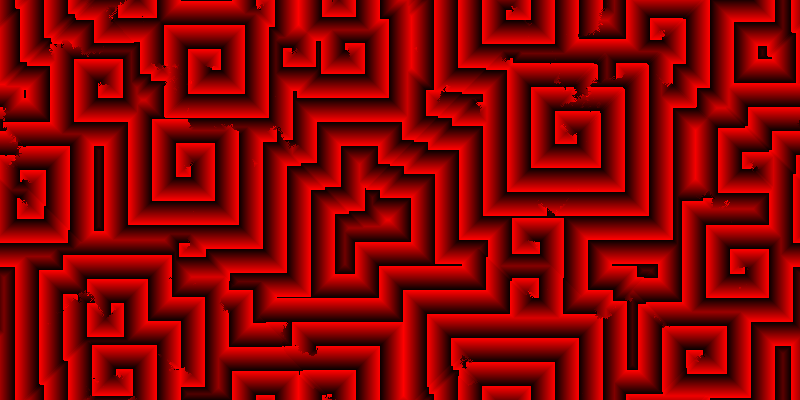The cyclic cellular automaton
A well-known (non-life-like) cellular automaton is the cyclic automaton. In this system, each cell in a rectangular grid with toroidal topology is assigned any of N discrete values, ranging from 0 to N − 1. In each step, a cell with value n is assigned value n + 1 (mod N) if any (Moore) neighbour has this value; if no neighbour has value n + 1 (mod N), the cell is left unchanged.
I ran the simulation with N = 24 from an initial soup (in which every cell was randomly assigned any of the N values with equal probability). After about 400 generations, a period-24 stage is reached, where the entire plane consists of animated square spirals:

You may also have a look at the transformation from the initial soup to the final state. (Warning: somewhat awesome.)
According to both Wikipedia and mirekw.com, the cyclic ceullar automaton and its variants were first described by David Griffeath.
